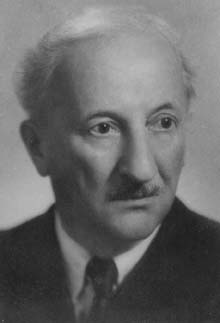 Institute of Plant Physiology and Genetics is one of the oldest biological Institutes
of the Bulgarian Academy of Sciences. It was founded in 1948 by Academician
Metodii Popov, as 'Institute of Biology'. In the subsequent year it was merged
with the Institute of Applied Biology and Organism Development. In the new
formed Institute named 'Institute of Biology', three departments existed:
Biology, Agrobiology and Forest Biology. In 1953 and 1954 from the Departments
of Agrobiology and Forest Biology two independent Institutes were founded
- Institute of Plant-Growing and Institute of Forestry. The Department of
Biology, headed by Acad. M. Popov, was then expanded to form five laboratories:
Stimulation, Biology, Immunology, Cytology, and Helminthology. From the Laboratory
of Helminthology originated the Central Laboratory of Helminthology (1954)
and from the Laboratory of Cytology - the Institute of Molecular Biology (1960).
Institute of Plant Physiology and Genetics is one of the oldest biological Institutes
of the Bulgarian Academy of Sciences. It was founded in 1948 by Academician
Metodii Popov, as 'Institute of Biology'. In the subsequent year it was merged
with the Institute of Applied Biology and Organism Development. In the new
formed Institute named 'Institute of Biology', three departments existed:
Biology, Agrobiology and Forest Biology. In 1953 and 1954 from the Departments
of Agrobiology and Forest Biology two independent Institutes were founded
- Institute of Plant-Growing and Institute of Forestry. The Department of
Biology, headed by Acad. M. Popov, was then expanded to form five laboratories:
Stimulation, Biology, Immunology, Cytology, and Helminthology. From the Laboratory
of Helminthology originated the Central Laboratory of Helminthology (1954)
and from the Laboratory of Cytology - the Institute of Molecular Biology (1960).
After
the death of Acad. M. Popov (April 19, 1954), the Institute was renamed to
'Acad. M. Popov Institute of Biology'. From 1954 to 1958 it was headed by
Professor P. Iliev, and from 1958 to 1970 by Professor K. Popov. Since 1960
the scientific investigation of the Institute have been directed to plant
organisms only, and two main Departments were founded - Stimulation and Inhibition,
and Plant Physiology and Biochemistry.
In 1964
the Institute was renamed to 'Acad. M. Popov Institute of Plant Physiology',
which is its present name. Five departments were specialized: Plant Stimulation
and Inhibition, Plant Physiology, Plant Biochemistry, Plant Cytogenetics,
and Plant Biophisics. From the last one, the Institute of Biophysics was originated.
During the period 1965-1973 the structure of the Institute was reorganised
on the principle of problem groups: Stimulation and Inhibition (with three
Laboratories), and Photosynthesis (with three Laboratories). In 1973, the
Department of Plant Physiology from the Institute of Plant Growing was joined
to the Institute of Plant Physiology, and three Departments were organised:
Plant Growth and Development (with three Problem Groups); Mineral Nutrition
(with two Problem Groups) and Photosinthesis (with two Problem Groups).
The next
change in the organisational structure of the Institute was made in 1976 -
five Departments were founded: Plant Growth and Development (with Laboratory
on Frost Resistance), Physiology and Ecology of Photosynthesis, Biochemistry
of Photosynthesis, Mineral Nutrition and Water Relation, Plant Selfregulation
(with Laboratory on Seed Physiology and Biochemistry). In 1978, two Laboratories
(Frost Resistance and Seed Physiology and Biochemistry) were separated as
independent scientifiec units in the Institute. In 1983 a Laboratory of Chemical
Phytoeffectors set up from the Department of Plant Growth and Development.
Three years later the Institute adopted the Department of Algology.
From 1971
to 1989 the Institute was headed by Prof. T. Kudrev, Corresponding Member
of the Bulgarian Academy of Sciences.
From 1989
to 2005 Director of the Institute was Acad. Emanuil Karanov. During his leadership
the current structure of the Institute was formed: Department of Algology,
Department of Genomics and proteomics, Department of Mineral nutrition and
water relations, Department of Photosynthesis, Department of Regulation of
plant growth and development, and Laboratory of Plant stress molecular biology.
After
the death of Acad. Emanuil Karanov, the Institute is leaded by its current
director Prof. Lozanka Popova.
The above
mentioned modifications in the organisation of the Institute express also
the changes in the priority of the scientific problems. Undoubtedly, as a
principal problem in the Institute's history endured the established by Acad.
M. Popov and developed as a tradition hypothesis of the plant stimulation
and inhibition, or regulation of plant growth and development.


